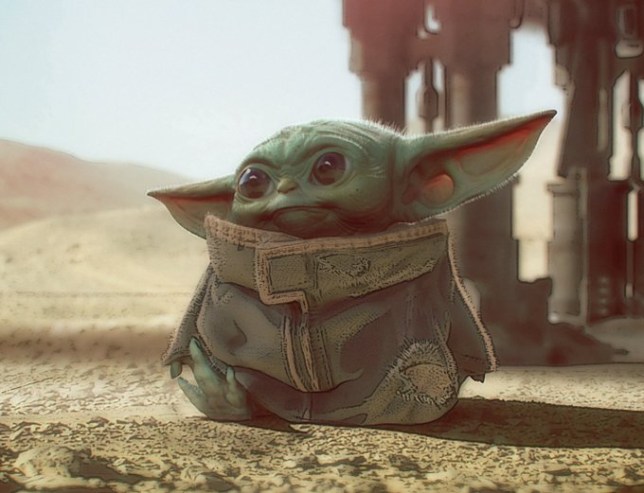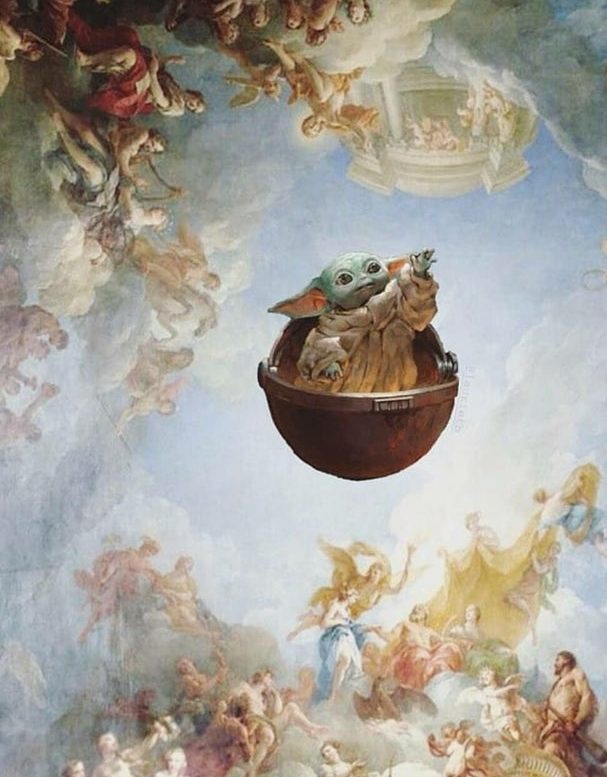
I screeched the first time I saw Baby Yoda, even though I knew the bundle of green joy was coming. Mere hours after the premiere episode of The Mandalorian—the Star Wars
spin off show that pitches a narrative outside the timeline of the films—the Internet was flooded with gifs and memes of this inconceivably adorable creature. However, it still didn’t prepare me for the moment when the infant appeared on screen. His enormous articulated ears, bulging eyes and general air of mischievous innocence was enough to make me melt, and holler at the screen every time he was allowed to tentatively walk around in his tiny brown robe: “Pick that baby off the ground for God’s sake!”

Images of the publicly named Baby Yoda, after the Jedi master of the same species (it is referred to as The Child on screen) disseminated so fast that platforms removed them, mistakenly believing that they were spoilers from the unreleased Episode IX: The Rise of Skywalker. Once the error was rectified, the obsession hit full tilt, with people utilizing screen grabs to poke fun at everything from self-care to baby boomers. The kid even inexplicably gained his own voice, which is almost exclusively relates to quests for “chicky nuggies”.
The exact reason why Baby Yoda has become so popular is hard to untangle. It certainly came as a surprise to Disney (owner of the franchise), which still hasn’t managed to get any real merchandise off the ground, missing what would surely have been a Christmas bonanza. Part of the appeal is certainly the magic of puppetry, which has proved to induce a visceral response in viewers in a way that CGI still cannot replicate (full disclosure: minimal elements are done in post-production). Much like The Muppets, Gremlins and The Dark Crystal (recently rebooted by Netflix), the power of the physical triumphs. Even Werner Herzog, who has a role in The Mandalorian, was unable to hold back the tears. He was in the puppet’s thrall to such a degree that he started to behave as if it was real while on set.
The extreme response fits into the rhetoric of recent studies concerning “cute aggression”, which sees people experience an involuntary impulse to squeeze or bite adorable pets and babies. Furthermore, Sianne Ngai’s essay The Cuteness of the Avant-Garde refers to early twentieth-century theories that highlighted children’s inherent cruelty, which informed a shift from toys that took the form of breakable items such as china dolls, to soft, indestructible alternatives that placated through their cuteness. The result being that younger generations grew up surrounded and overwhelmed by cute things.

A video by Wisecrack goes further to explain that our somewhat violent caregiving impulse is heightened even further when the object of our affection is in peril or upset. This rather sinister thought seems to be yet another affliction of contemporary culture, and yet there might be something even deeper running within our Baby Yoda-shaped obsession. This creature, while seemingly vulnerable and naïve, is actually more powerful than all of us, and inflicts his own gargantuan violence later in the show. Our need to worry for him is tempered by our knowledge that he will probably be fine, because his mighty actions are ultimately beyond our control.
It is no accident that Baby Yoda gained such fanfare at a time of epic despondency and conflict. As we crawled through the last dregs of 2019, it offered a form of light relief, allowing us to revel in cuteness and innocence for a short while, and suspend the trials of real life. By combining a perfect mix of realistic adorableness, childhood nostalgia and comedic timing, Baby Yoda’s creators provided a soothing balm for the anxieties of modern existence and allowed plenty of us to assume the role of protector in a world that feels increasingly out of control.





